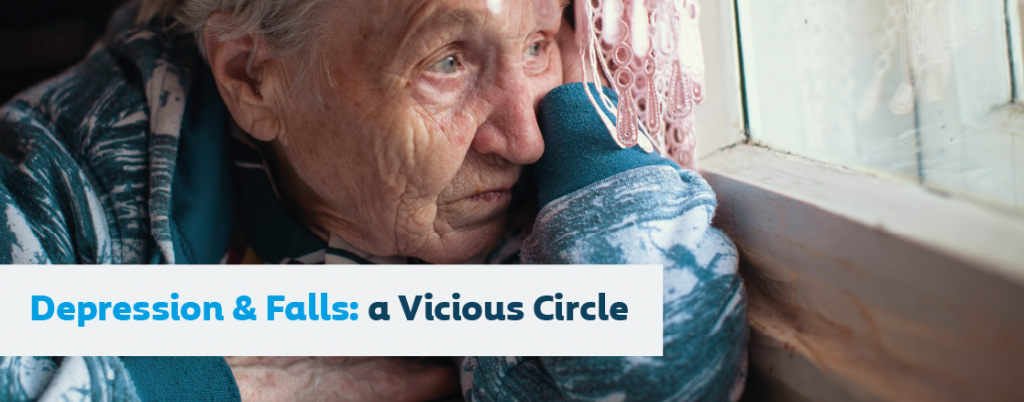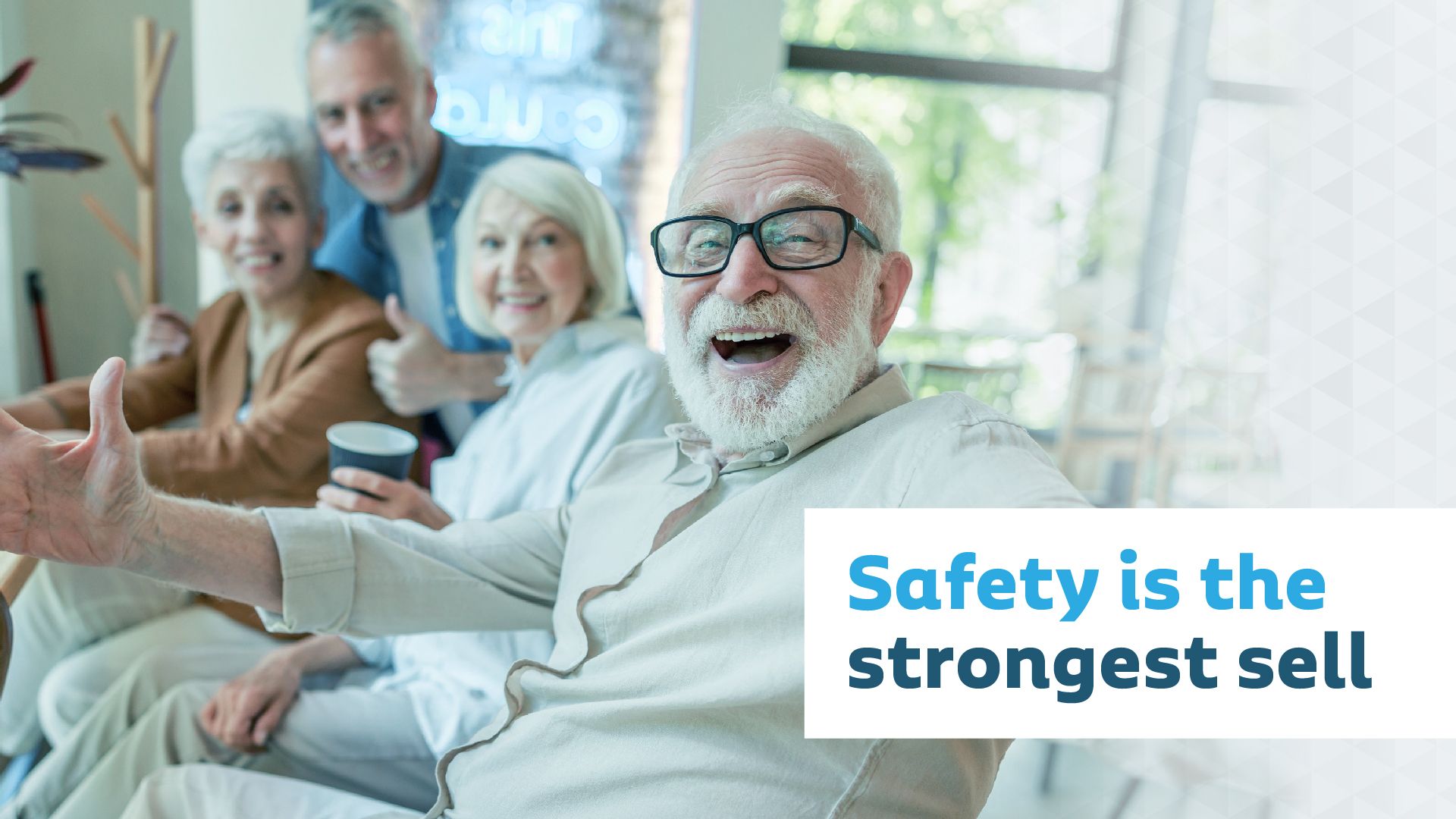Main Menu
Posted by Elissa Barpal
November 14, 2022Depression and Falls: How Data Delivers Proactive Care

Every second, an older American suffers a fall. In fact, falling is the leading cause of injury-related death among adults age 65 and above. With a rapidly growing senior population, senior living communities and their technology partners need to tackle the causes, including one that’s been overlooked for decades: the link between depression and falls.
The physical relationship is thought to hinge on psychomotor retardation: slower thinking and body movements. In people with depression, decreased blood flow in certain parts of the brain and faulty dopaminergic neurotransmission affect balance, making falls more likely.
Falling and depression: a vicious circle
As we age, most of us become more prone to falling. Chronic illness and poor eyesight or hearing are known to affect strength and balance, for example. But depression as a fall risk factor is often overlooked.
Research reveals that the incidence of falls increases among aging adults with depression. According to one study, depression and depressive-related symptoms increase fall risk by 55% for seniors with any two risk factors and by 144% for those with three to four risk factors.
What’s more, depression and falls are a vicious circle. Falling once doubles the chances of falling again, not only due to physical injuries, but also to depression and the fear of falling, resulting in avoidance of activity, which further impacts mental health.
Reduced mobility also affects muscle tone, energy and motivation. Insomnia, poor appetite, and nutritional deficiencies are all symptoms of geriatric depression that increase fall risk. Even common anti-depressants may be a double-edged sword, increasing the risk of falling.
Falling under the radar
Few people are eager to acknowledge their own frailty. That’s why fewer than half of elderly falls are reported to caregivers, doctors or even family members. When it comes to mental health issues, many seniors are especially reluctant to ask for help.
For the majority of seniors, dignity, privacy and independence are paramount. A dizzy spell when getting out of bed or a brief blackout in the shower can easily be dismissed by an older adult keen to maintain their lifestyle. Effective falls management therefore requires a new approach.
Fall prediction: leveraging the power of data
While the invisible symptoms of depression such as impaired concentration and feelings of sadness or hopelessness can only be revealed by human interactions, symptoms like fatigue, inactivity, insomnia, appetite loss, early-morning wakefulness and/or excessive sleeping can now be monitored automatically.
The latest sensors track movement around the clock to provide rich data on residents’ activity. Behavioral patterns such as bathroom frequency, how long a resident is active, how long they spend at rest, what time they go to bed and get up, and how often they visit the bathroom help to identify loneliness, depression and anxiety, as well as mobility loss.
Over time, this behavioral data can provide key insights into a person’s health, mobility and wellbeing, allowing caregivers to make timely interventions that dramatically improve the mental health of older adults and reduce the likelihood of falls.
Nurse call system providers can leverage this information to provide facilities with comprehensive behavioral profiles that identify at-risk residents. It’s the key to proactive, personalized care and accurate risk assessment, enabling caregivers to address both depression and falls.
Vayyar Care: delivering the data caregivers need
Vayyar Care is the world’s most advanced elderly care solution, providing instant fall detection that enables caregivers to provide rapid response, as well as a wealth of activity data that supports the creation of personalized falls management and resident wellness plans.
One Vayyar Care sensor covers an entire room, providing round-the-clock monitoring — even in darkness or steam — for residents of assisted living, skilled nursing, or memory care facilities. It accurately identifies sudden – or gradual – changes in their height profile, picking up both sudden, serious incidents and unreported “hidden” falls. It also tracks presence in room, in bed, on a chair, and in the bathroom over time, generating insights into both physical and psychological wellbeing.
Crucially, it maintains privacy at all times since no cameras or microphones are involved, allowing care providers to protect people more effectively and efficiently while respecting their dignity and independence.
Over a hundred nurse call system and platform providers around the world presence have integrated Vayyar Care with their offerings. By gathering data on how long residents spend in and out of their rooms, at rest, and how many visitors they have, they’re able to generate mobility score and loneliness alerts that are the key to identifying and responding to depressive symptoms.
To learn more about how Vayyar Care gives caregivers the tools to identify depression and reduce fall risk, click here.
This article was first published by McKnight’s Senior Living.
The Post URL was successfully copied to your clipboard
Read more on #elderly care

08 October 2024
Recruit, reinforce, and retain should be the mantra of any hiring manager.…
Read more
05 August 2024
We’re living longer, not healthier. Over 95% of people aged 65 or…
Read more
17 June 2024
Senior living occupancy has recovered from the perfect storm it weathered in…
Read more
12 May 2024
Artificial Intelligence is on the verge of revolutionizing fall prevention in elderly…
Read more



